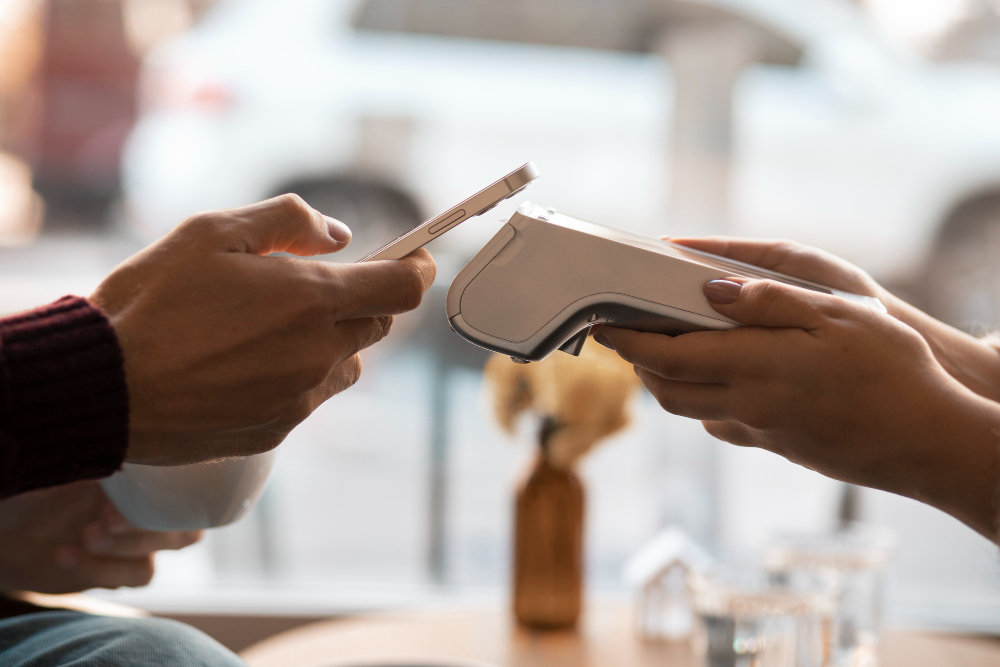Understanding the Psychological Effects of Tap-to-Pay
Contactless payments have become one of the major phenomena in the U.S. financial system, with the widespread adoption of NFC-enabled cards.
Over the past few years, millions of consumers have shifted to making transactions simply by tapping their devices on enabled terminals.

Speed and convenience are undeniable, but there is also a less visible dimension that deserves attention: the psychology behind these transactions.
1. The Dynamics of Reduced Friction
One of the core concepts in consumer psychology is transactional friction, the perceived effort required to complete a purchase.
Traditional methods, such as cash or checks, involve high friction: counting money, signing, checking change.
Chip cards significantly reduced this effort, and tap-to-pay has virtually eliminated it.
The simple gesture of tapping a card or phone makes the transaction almost invisible from a psychological standpoint, reducing the perception of immediate financial loss.
2. The “Less Painful” Payment Effect
Neuroeconomists describe the concept of the pain of paying, which refers to the activation of brain areas associated with loss whenever money is spent.
Paying with physical cash generates more pain, as the act of handing over bills makes the loss tangible.
With tap-to-pay, the transaction is so fast and symbolic that the pain is significantly reduced.
fMRI studies show that in digital payments, there is lower activation in the anterior insula, a region linked to financial discomfort.
3. The Role of Instant Reinforcement
Beyond reducing the pain of paying, tap-to-pay connects with behavioral reinforcement mechanisms.
Consumers experience a sequence of immediate stimuli: the sound signal at the terminal, the visual confirmation, and the sense of fluidity.
These micro-stimuli work as conditioned rewards, strengthening the positive association between spending and instant gratification.
The effect is even stronger when combined with loyalty and cashback programs offered by U.S. banks and fintechs.
4. Temporal Dissociation
Tap-to-pay also fosters a phenomenon called temporal discounting, where quick, unobtrusive payments are dissociated from consumption.
Consumers focus on the immediate reward of the purchase and postpone consideration of the financial cost, which is only felt when the credit card bill arrives weeks later.
This dissociation creates a behavioral bias: prioritizing immediate pleasure over future costs.
5. Perception of Security and Trust
Interestingly, the psychology of tap-to-pay is not only about impulse and pleasure—it also involves trust in technology.
By experiencing a smooth process and noticing biometric authentication layers on smartphones, consumers perceive the method as safer.
This sense of trust directly impacts mass adoption: the stronger the subjective perception of security, the faster the habit spreads.
6. Effects on Household Budgeting
From a personal finance perspective, tap-to-pay introduces challenges, especially by creating an illusion of abundance.
Researchers at the University of Chicago observed that U.S. households that heavily migrated to tap-to-pay showed an average 12% increase in discretionary spending compared to those still using traditional methods.
7. Psychological User Profiles
Not all consumers respond to tap-to-pay in the same way.
Younger demographics—especially Millennials and Gen Z—show greater risk tolerance and higher adoption of contactless technologies, treating payment as a natural extension of the consumption experience.
Older consumers tend to be more cautious, but once convinced of its safety, they also migrate, motivated by the pursuit of convenience.
This generational divide suggests that the psychology of tap-to-pay is closely tied to cultural factors and financial socialization.
8. Implications for the Financial System
From the perspective of financial institutions, understanding the hidden psychology of tap-to-pay is critical for risk management and product development.
Banks and fintechs must balance the promotion of convenient payment methods with financial education initiatives, preventing reduced payment pain from translating into unsustainable debt levels.
In addition, the more frequent, lower-value spending patterns typical of tap-to-pay directly affect models of fraud detection, credit assessment, and risk pricing.
9. The Future Outlook
In the U.S., the trend points toward even more integrated systems, such as invisible payments in autonomous stores (e.g., Amazon Go), where friction disappears entirely.
From a psychological standpoint, this represents the peak of payment invisibility, further intensifying individual financial control challenges.
The central debate becomes: to what extent should convenience prevail over the need for active financial awareness?
